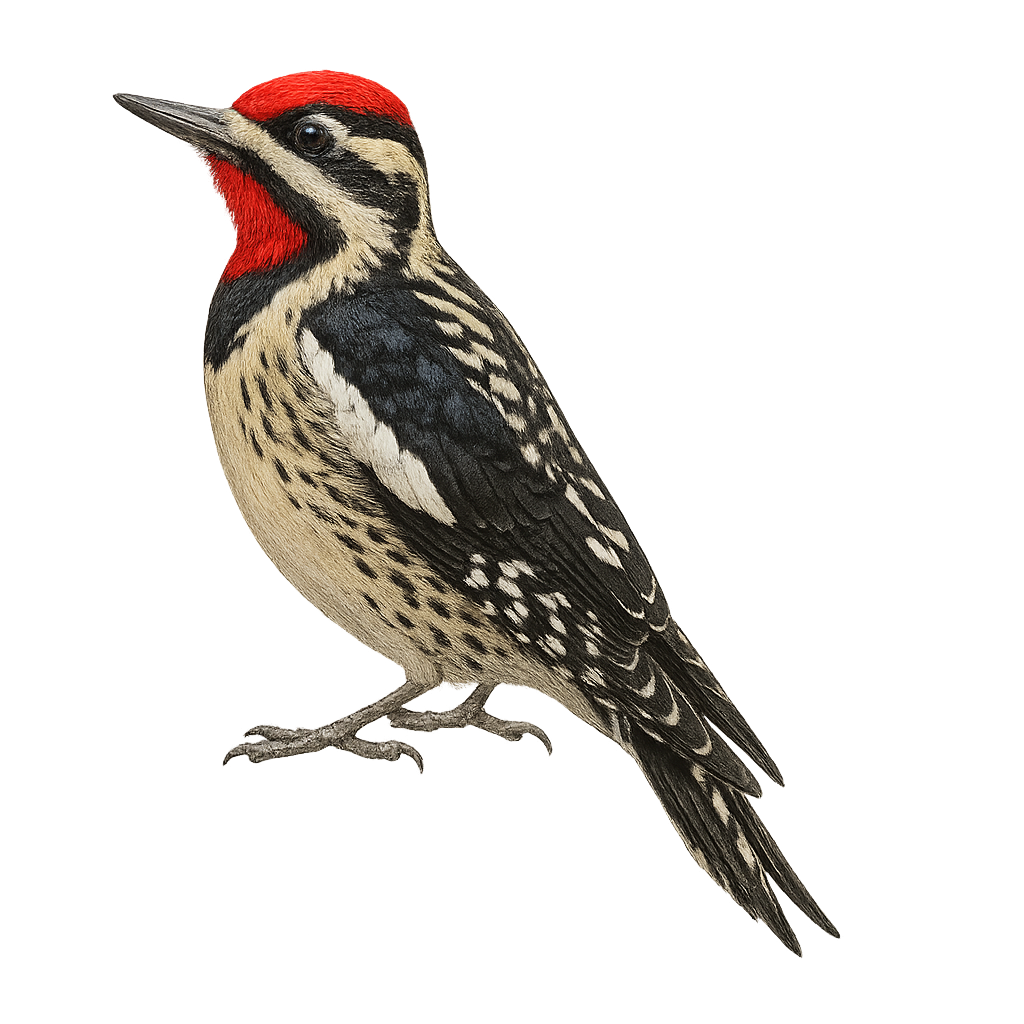Your wildlife photography guide.
Explore the yellow-bellied sapsucker in detail, study its behavior, prepare your shots.
Where to observe and photograph the yellow-bellied sapsucker in the wild
Learn where and when to spot the yellow-bellied sapsucker in the wild, how to identify the species based on distinctive features, and what natural environments it inhabits. The WildlifePhotographer app offers tailored photography tips that reflect the yellow-bellied sapsucker’s behavior, helping you capture better wildlife images. Explore the full species profile for key information including description, habitat, active periods, and approach techniques.
Yellow-bellied Sapsucker
Scientific name: Sphyrapicus varius

IUCN Status: Least Concern
Family: PICIDAE
Group: Birds
Sensitivity to human approach: Suspicious
Minimum approach distance: 5 m
Courtship display: April to June
Incubation: 12-13 jours
Hatchings: April to June
Habitat:
Deciduous forests, mixed forests, wooded areas
Activity period :
Primarily active during the day, with peak activity in the morning and late afternoon.
Identification and description:
The Yellow-bellied Sapsucker, Sphyrapicus varius, is a medium-sized bird belonging to the woodpecker family. It is easily recognizable by its distinctive plumage, featuring a pale yellow belly, a head striped with black and white, and a bright red patch on the forehead. This bird primarily feeds on insects but also consumes tree sap, which it extracts by drilling holes in the bark. It is mainly found in deciduous and mixed forests of North America, where it nests in tree cavities. As a migratory bird, it winters in the southern United States and Central America. The Yellow-bellied Sapsucker plays an important ecological role by creating habitats for other species through its sap wells.
Recommended lens:
400 mm – adjust based on distance, desired framing (portrait or habitat), and approach conditions.
Photography tips:
To photograph the Yellow-bellied Sapsucker, it is advisable to use a telephoto lens of at least 400mm to capture precise details without disturbing the bird. Look for areas where trees have sap wells, as these birds are often active there. Be patient and discreet, hiding behind trees or bushes to avoid scaring them away. The best times to observe them are early in the morning or late in the afternoon when their activity peaks.
The WildlifePhotographer App is coming soon!
Be the first to explore the best nature spots, track rutting seasons, log your observations, and observe more wildlife.
Already 1 430 wildlife lovers subscribed worldwide

